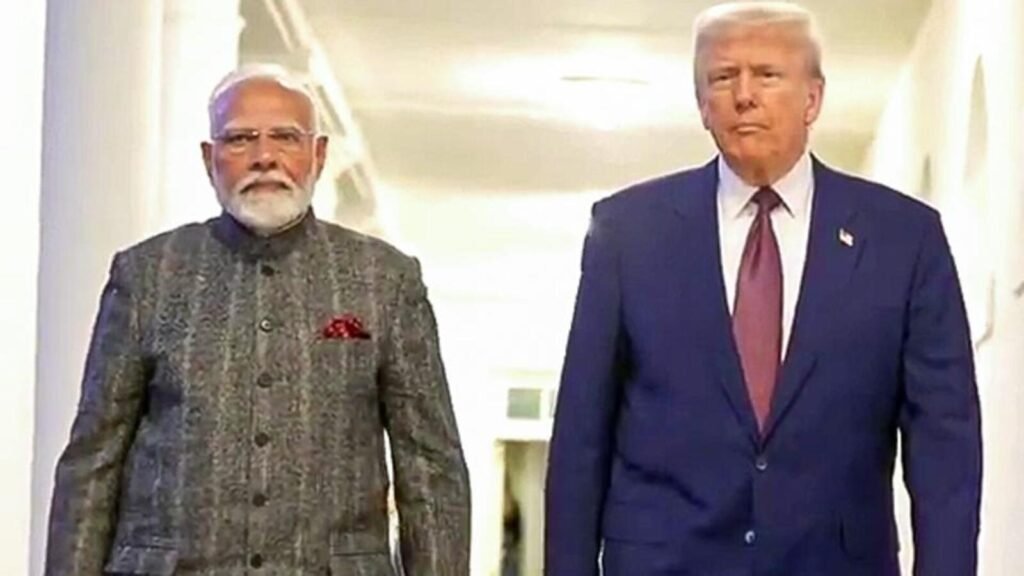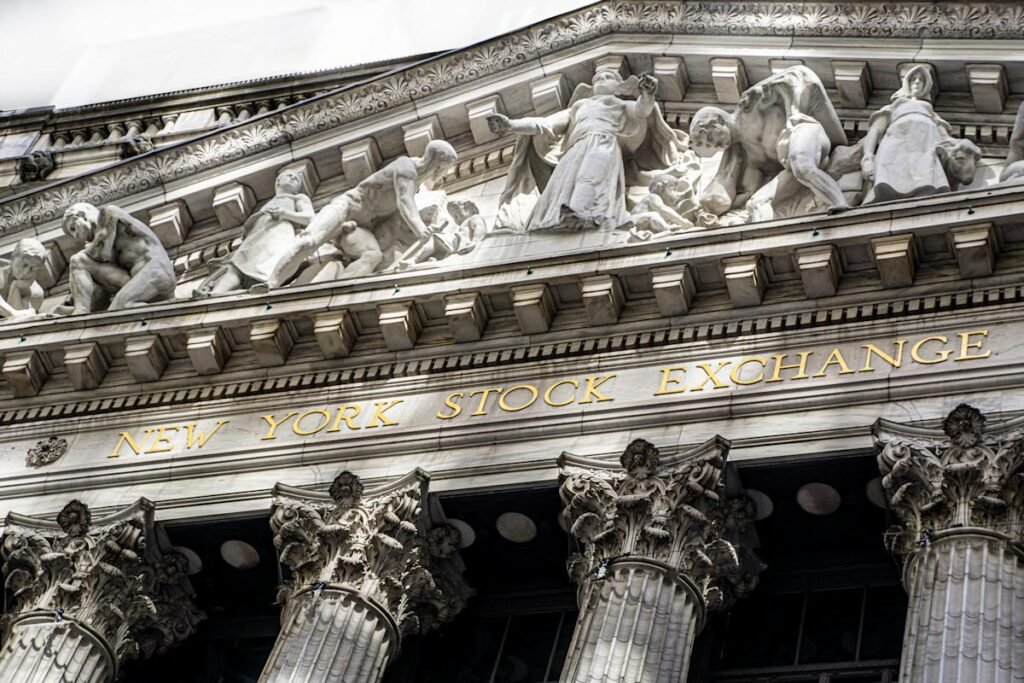Now Reading: US stock market gains as S&P 500 rises: US stock market today: Wall Street edges higher as S&P 500 gains on Trump’s Vietnam trade deal, Nasdaq jumps, Dow steady amid weak ADP jobs data
-
01
US stock market gains as S&P 500 rises: US stock market today: Wall Street edges higher as S&P 500 gains on Trump’s Vietnam trade deal, Nasdaq jumps, Dow steady amid weak ADP jobs data
US stock market gains as S&P 500 rises: US stock market today: Wall Street edges higher as S&P 500 gains on Trump’s Vietnam trade deal, Nasdaq jumps, Dow steady amid weak ADP jobs data

The Nasdaq Composite performed slightly better, climbing 0.7%, while the Dow Jones Industrial Average hovered near the flatline, reflecting mixed investor sentiment amid both positive trade developments and concerning economic indicators.
US stock market today: S&P 500 rises, Dow gains, Nasdaq up ahead of key jobs report
The US stock market showed mixed movements today, July 2, 2025, with the S&P 500 and Nasdaq Composite trading higher, while the Dow Jones Industrial Average saw modest gains. The markets responded to President Donald Trump’s announcement of a Vietnam trade deal, alongside investor caution over weaker-than-expected private payroll data for June.
Key index performance
- S&P 500 (via SPY ETF): 618.8, up 0.2%
- Nasdaq Composite: +0.7%, helped by tech recovery
- Dow Jones Industrial Average: Up nearly 400 points or ~0.9%, led by industrials and materials
Sector highlights and major movers
- Tesla stock surged nearly 6% after reporting 384,000 Q2 deliveries, beating expectations.
- Health-care sector dropped sharply, with one major provider falling around 40%, dragging others in the group.
- Materials and industrials stocks gained, as investors rotated away from tech and into value sectors.
Economic data influencing the market
- ADP private payrolls report showed a decline of 33,000 jobs in June — the first monthly drop since March 2023.
- Economists had expected a gain of 100,000 jobs, leading to speculation about a potential Fed interest rate cut at the July meeting.
- Eyes are now on Thursday’s official non-farm payroll report, forecasted to show 110,000 job gains and 4.3% unemployment.
Market outlook:
- Federal Reserve decision on interest rates could shift if job data continues to weaken.
- Investors remain cautious, with stock indexes near all-time highs and macroeconomic uncertainty in focus.
- Trump’s tax-and-spending bill, which just passed the Senate, is heading to the House and may influence fiscal policy outlook in the coming weeks.
- Tariff deadlines and ongoing geopolitical developments are also on the radar for market watchers.
What does Trump’s Vietnam trade deal mean for the U.S. stock market?
President Trump’s announcement of a new trade deal with Vietnam provided a brief tailwind to the S&P 500 and investor sentiment. Although the president did not offer details about the agreement, the post alone was enough to shift market focus from ongoing global economic uncertainty to potential international cooperation. This deal could mark a strategic step in balancing Asian trade relations, especially as tensions with China continue to weigh on global markets.
However, without specifics, analysts remain cautious. Markets are looking for clarity—such as whether the deal covers tariffs, technology exchange, or broader economic cooperation.
Why did job losses weigh on market optimism?
The optimism sparked by Trump’s trade news was tempered by a stark jobs report from ADP, showing that private payrolls declined by 33,000 last month. This marked the first negative reading since March 2023, and it shocked analysts, who had projected a gain of 100,000 jobs.
Ross Mayfield, an investment strategist at Baird, told CNBC, “We’ve been seeing a weakening of the labor market for months, and I always wondered if it would take a negative payrolls print to get the [Federal Reserve] to pay more attention.” His comment reflects growing concern that the Fed’s focus on inflation may be overshadowing emerging cracks in the labor sector.
Could weak employment data push the Fed to cut interest rates?
Investors are now speculating whether Federal Reserve policymakers will shift course. A weak job market could become a trigger for a long-anticipated rate cut, especially as inflation pressures begin to cool. The CME Group’s FedWatch tool now shows a 25% chance of a July rate cut, up from 20% just the day before.
Sam Stovall, chief investment strategist at CFRA Research, believes that a softer jobs report could clear the path. “If we end up having a fairly weak employment report, then that could allow the Fed to be cutting rates,” he said. Stovall also pointed out that Fed Chair Jerome Powell had previously mentioned that the central bank would have already cut rates if not for Trump’s earlier tariff plans.
How are markets reacting ahead of the official jobs report?
Despite Wednesday’s ADP data, traders are now looking ahead to Thursday’s official government jobs report. Economists are forecasting a gain of 110,000 jobs for June. However, if that figure misses the mark in a similar way to ADP’s number, markets may begin pricing in more aggressive Fed action later this month.
This comes as stocks flirt with record highs, making them particularly sensitive to economic data and Federal Reserve decisions. Wall Street’s mixed performance—where the Dow surged 400 points on Tuesday while tech-heavy indexes fell—suggests a market still unsure about its direction.
What other political developments are influencing Wall Street?
In addition to the trade announcement and economic data, investors are watching Trump’s tax-and-spending bill, which narrowly passed the Senate on Tuesday. The measure now returns to the House, where some GOP lawmakers remain opposed. The bill could have broad implications for sectors like infrastructure, healthcare, and manufacturing, depending on how funds are allocated.
Meanwhile, the market has seen a rotation out of technology stocks and into more defensive sectors such as materials and healthcare, signaling that investors are bracing for potential economic headwinds.
Today’s US stock market at a glance
| Index | Move Today |
| S&P 500 | +0.2% |
| Nasdaq | +0.7% |
| Dow Jones | +0.9% (~400 pts) |
- Tech stocks recovered, led by Tesla
- Health-care stocks under pressure
- Investors watch job data and Fed signals closely
What should investors watch now?
- S&P 500 rose 0.2%; Nasdaq gained 0.7%; Dow was flat.
- President Trump announced a new U.S.-Vietnam trade deal, but offered no specifics.
- ADP report showed 33,000 private jobs lost in June, vs. 100,000 expected.
- Fed may consider interest rate cuts if Friday’s official jobs data also disappoints.
- Trump’s tax bill passed Senate, still faces GOP resistance in House.
With Trump’s trade diplomacy making waves and labor market signals flashing warning signs, all eyes are on the upcoming jobs report and the Federal Reserve’s July policy meeting. The next few days could shape the trajectory of both the stock market and U.S. economic policy for the rest of 2025.
FAQs:
Q1: Why did the S&P 500 rise after Trump’s Vietnam trade deal?
Because investor sentiment improved after Trump revealed a new trade agreement with Vietnam.
Q2: Could weak jobs data lead to a Fed rate cut?
Yes, a drop in payrolls could push the Fed to lower interest rates this month.



![[PODCAST] Corvette News and Headlines with CorvetteBlogger on the Corvette Today Podcast](https://steinews.com/wp-content/uploads/2025/08/PODCAST-Corvette-News-and-Headlines-with-CorvetteBlogger-on-the-Corvette.jpg)













































